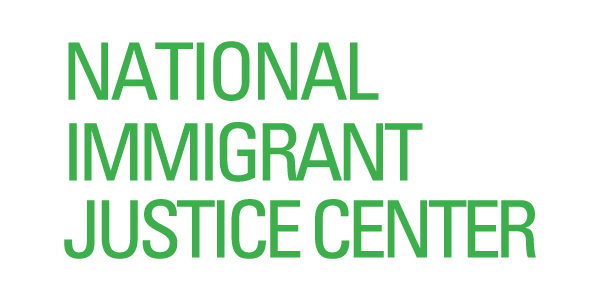Customizing Documents for Children
By Claire R. Thomas1
Too often, advocates working with children use materials created for adults in their representation. Instead, advocates should strive to use culturally and linguistically sensitive, age- and developmentally appropriate materials with their young clients. UICs present particular challenges for advocates because most have limited English proficiency and many have had their education interrupted. Even the most basic documents required for legal representation, such as retainer agreements and intake forms, can be overwhelming and misunderstood by young people who are unfamiliar with the English language, and who are from cultural backgrounds in which institutions like the legal system are completely unfamiliar. For many UICs, this will be the first time they have worked with an attorney, making clear communications between the child and the attorney even more crucial.
Customizing documents for children will enhance the attorney-client relationship and increase a young client’s understanding of the legal process. How information is presented can be as important as what is presented. For example, using images can help make information more understandable and user-friendly, and videos or interactive flow charts may be useful communication tools for child clients.
Among the most commonly used documents in UIC representation are retainers, releases, intake forms, and flowcharts or other informational documents to help explain the legal process. When creating or customizing these documents for use with children, they should be accessible and culturally appropriate, enhance the attorney/client relationship, and improve communication between advocates and their child clients. The rubric linked in this manual’s online document bank can serve as a guide for advocates to assess commonly used documents against these criteria.
1. Accessible. Present documents in a style and format that is child-friendly. Clarity and brevity are important. Explanations should be basic and understandable, but not so vague as to miss important details or relevant information.
A. Use clear language. Legal documents often use sophisticated language that is better suited to an educated, adult audience and not to the young immigrant client. Documents developed for UICs should use text that is clear, short, and direct. Avoid run-ons, compound sentences, and legal jargon. Remember that the document will likely be translated, either verbally or in writing, and clarity will facilitate the ease and quality of the translation.
B. Consider different formats. When drafting a retainer agreement or other documents, consider the purpose of the tool and if the medium is the best format for the message and audience. While it is clear that some instruments, such as retainer agreements, should be written documents, consider supplementing documents with video, graphics, or verbal guidance to clarify certain sections for particular audiences. See, for example, the five-part video series on SIJS[iii] created by the New York City-based organization Atlas DIY.
2. Culturally appropriate. Understanding the customs, beliefs, behaviors, language, and perspective of the young client is paramount to successful representation. For each document or tool, advocates should consider its appropriateness in terms of the client’s age, competency, capacity, cultural background or other characteristics.
A. For more information about cultural competency and awareness, see the Curricula Enhancement Module Series, a project of the National Center for Cultural Competence at Georgetown University’s Center for Child and Human Development.
B. For more information about children’s developmental stages and the growth of their intellectual abilities, see the Child Development Institute website.
 3. Enhance the attorney/client relationship. There is no substitute for frequent communication with the client to ensure her continued understanding of the role of the legal advocate. When customizing a retainer agreement or any other document for child clients, advocates should consider who will review the document with the client (e.g., paralegal, immigration attorney, pro bono attorney) to ensure that the information in the document will be understood clearly by both parties. It is important for the advocate to clarify for the child that her role is to pursue the child’s expressed interests. Often, this will be the first time the client has worked with an attorney, so clarify roles early and throughout the representation.
3. Enhance the attorney/client relationship. There is no substitute for frequent communication with the client to ensure her continued understanding of the role of the legal advocate. When customizing a retainer agreement or any other document for child clients, advocates should consider who will review the document with the client (e.g., paralegal, immigration attorney, pro bono attorney) to ensure that the information in the document will be understood clearly by both parties. It is important for the advocate to clarify for the child that her role is to pursue the child’s expressed interests. Often, this will be the first time the client has worked with an attorney, so clarify roles early and throughout the representation.
A. Ensure accuracy. Customizing a document for a child must not detract from its accuracy. Review documents to ensure that information is presented clearly, and is not vague or misleading. Consider asking the child to explain her understanding of the document to test her comprehension.
B. Reduce stress. Children participating in the legal process often are anxious about the proceedings. Immigrant children face additional stress such as their migration trauma, pending removal proceedings, and acculturation to a new environment and language. Advocates should anticipate their clients’ questions or concerns and use tools that reduce their stress. For example, using a flowchart or video component to illustrate the process of legal representation might enable clients to more fully understand their role, and make the experience less foreign and frightening. (See SIJS video by Atlas DIY above.)
C. Empower UICs to make informed decisions. Reviewing a retainer agreement with a young person should be a joint activity requiring participation from both parties. This collaborative approach can make the process of completing a retainer agreement or document an empowering and engaging experience for clients, and also helps them to more clearly understand roles and responsibilities.
D. Further legal representation. While documents tailored for children should be as simple as possible, they must contain all the information to further the legal representation, and meet the purpose of the documents themselves. For example, effective retainer agreements convey:
- Scope of the representation
- Confidentiality of communications
- Expectations regarding the representation (such as the importance of honesty in communications with counsel)
- Grounds for termination by either the child or the attorney
- Fees
- Any service- or case-specific supplements
- Signature or other written acknowledgment
See the following samples of commonly used documents customized for child clients
4. Improve communication. Using child-friendly documents enhances communication on many fronts: between the attorney and the client; the mentor organization and pro bono counsel; with internal or external social services providers; and between the attorney and adult family/sponsors.
A. Communication between mentor organization and pro bono counsel. Often, pro bono partners need to use their firm’s retainer agreements even when representing clients as volunteers. Using a standard retainer agreement, drafted for a sophisticated corporate client, presents a problem when used with young people who may not understand it or who may feel anxious and confused when presented with it. This is a good (and important) opportunity for pro bono counsel and legal services organization staff to collaborate so that pro bono counsel can revise their retainer agreements with language their young clients are more likely to understand.
Compare, for example, an adult retainer, with a more child-centered agreement.
B. Communication with social services providers. It even may be necessary to have different retainers, releases, and other forms for use between different providers or different programs within each office. For example, social workers working within the same organization as the legal service provider might have their own forms for clients to sign, including retainer agreements or forms allowing for the release of medical information and records under the federal Health Insurance Portability and Accountability Act (HIPAA).
- Authorization for release of information documents should include the child’s name, date of birth, and address; the specific information being requested; information about the requestor and the provider; and the duration of the validity of the authorization. Releases should be signed by the client/patient and/or an individual legally authorized to sign on her behalf, and also include the date on which the release is signed. See, for example, this sample authorization for release of information for school or social services records.
- HIPAA-compliant consent forms vary state by state. In general, to comply with the HIPAA, forms should include the same information noted in the paragraph above. See, for example, the New York State HIPAA form, as well as a sample form from California.
Keep in mind that that the client may not understand the differences between or the need to sign multiple documents. She might even become nervous by the amount of forms required. Advocates recommend taking the time to explain to the child why the forms – and multiple signatures – are required.
C. Communication with caretakers. Often, UICs will rely on adult caretakers to bring them to legal appointments, hearings, and to help them comply with responsibilities relating to their immigration cases. These caretakers may have many questions for advocates, including if an advocate can help with their own immigration cases or request confidential information about the child’s case. Advocates often grapple with how to involve adult caretakers without creating a conflict.
One possibility is to create separate caretaker agreements to outline the caretaker’s role in the child’s case. This document specifically states that it does not create an attorney-client relationship with the caretaker. It clearly articulates that the advocate represents the child client and can discontinue communication with the caretaker at the client’s request. Informational pamphlets addressing frequently asked questions by caretakers could also be helpful in recognizing the caretaker’s important role in the child’s life without giving legal advice that could present a conflict.
Conclusion
Customizing documents such as retainer agreements, releases, and intake forms specifically for young people will help advocates better serve their clients. Documents and tools should be accessible, enhance the attorney-client relationship, and improve communication between various parties involved in the representation, including adult caretakers. Non-traditional presentation styles, such as interactive flow charts and videos, are potentially useful for communicating with young clients who have limited English proficiency and interrupted education. Modifying documents to make them more user-friendly for young clients can promote their meaningful participation in their representation, strengthen their understanding of their rights and responsibilities, and ensure that they are treated fairly and with dignity.
 1. Claire R. Thomas is an adjunct professor at New York Law School and the director of training for the Safe Passage Project.
1. Claire R. Thomas is an adjunct professor at New York Law School and the director of training for the Safe Passage Project.

